The semi-automatic shotgun is also enjoying its share of worship as we kneel on the altar of the semi-automatic firearm. It seems that getting the most rounds downrange is an imperative these days and is indicative of the fancy of most shooters. Of course, in doing what we do, some firearms fall behind the curve and seemingly are destined to go the way of the single-action revolver and muzzle-loading firearms; nice to have but not essential to our purpose – whatever that may be.
Of course, there are those who do not fall completely for the semi-automatic rifle, carbine, or pistol. It is hard; however, to dispute the virtue of having three firearms for the purpose of hunting, sport shooting, or defense of home or self. It is difficult, as well, not to recognize the attributes of the semi-automatic firearm that places it well above other types of firearms, while still falling short of full-automatic firearms for purposes such as binge shooting of ammunition just because you can. Repeating rifles were a significant advance over the preceding breech loaded single-shot rifles when used for military combat, because they allowed a much greater rate of fire. Repeating rifles saw use in the American Civil War during the early 1860s. Among repeating firearms, there are two types of mechanisms for operation; manual and automatic. Manual mechanisms include; revolver action, bolt action, lever action, pumps, and falling block. Automatic mechanisms include; gas-operated, blowback operation, and recoil operation. You can view more about these @ http://en.wikipedia.org/wiki/Repeating_rifle. Early manual mechanism repeating firearms employed the lever as a means to extract, eject, cock the action, and load a fresh round of ammunition from a tubular magazine. The lever-action rifle has enjoyed a life since around 1860 in the United States and is still a popular firearm today – and will be into the future. Of the many advantages of the lever-gun (greater rate of fire as compared to a bolt-operated firearm and they are user-ambidextrous), there are also disadvantages that led to its demise by the military; for one, the lever could not be operated efficiently by a rifleman while in a prone position. Tubular magazine are the common means to feed lever-action firearms, which limits the ammunition that can be used in them. With the tip of the bullet resting on the primer of the next cartridge, one must take care in the selection of ammunition used with the lever-action firearm. However, the ammunition problem has been addressed by providing a box-magazine for some makes of rifles that are intended for use with “Spitzer” type ammunition (for example; the Browning BLR or the Savage Model 99). Due to the higher rate of fire and shorter overall length than most bolt-action rifles, lever actions have remained popular to this day for sporting use, especially short- and medium-range hunting in forests, scrub, or bush land. Prison guards used Lever-action firearms in some quantity, and wildlife authorities/game wardens carry a good lever-action rifle or carbine in many parts of the world. Many a lever-action .30-30 (and other calibers) has taken game home to the pot over the years. Lever-action firearms; however, are not generally as strong as bolt-action or semi-automatic firearms with few exceptions. Lever-action firearms can be quickly operated with a simple down-and-up motion on the lever by the strong hand while the weak hand supports the firearm.Pump-action firearms (rifles and shotguns) have been around for a while but are more prevalent in the shotgun class of firearms. Like the lever-action, most pump-action firearms use a tubular magazine for feeding cartridges (or shells for shotguns) into the firearm. Although there are pump-action rifles, tube-feeding lends itself more to the shotgun due to the same characteristics that plague the lever-action firearm – ammunition type. However, the ammunition problem has been addressed by providing a box-magazine for some makes of rifles that are intended for use with “Spitzer” type ammunition (for example, the American Remington 7600 series).
Operation of the pump-action firearm is with a simple back-and-forth motion of the support hand as compared to the down-and-up motion of the strong hand for the lever-action firearm.
The bolt-action firearm is, perhaps, the earliest of the three manually operated repeating firearms. The bolt-action firearm has been in existence since about 1824 and the Greene bolt-action rifle almost became the fighting rifle of the United States Civil War (that war between the states and of northern aggression) had it not been so complicated to use by the troops and was replaced by the Springfield muzzle-loader. However, bolt-action rifles continued to be developed and the Palmer rifle birthing was in 1863.Bolt-action rifles came to dominate the battlefield in many wars and conflicts. There are three major bolt-action systems; (1) Mauser, (2) Lee-Enfield, and (3) Mosin-Nagant. The Mauser Gewehr 98 is considered the epitome of bolt-action rifles and many manufactures today copy its design.
Although early bolt-action rifles were fed by tubular magazines, box magazines have been used since 1885 and continue to today as being the most reliable means to feed hungry chambers. The box magazine may be internal and not removable, internal but releasable by dropping the bottom door of the magazine thus emptying the contents of the magazine, or detachable box that can be removed entirely from the firearm. A bolt-action firearm can also be fired single-shot, which requires manually loading and reloading each round by hand into the chamber. The bolt-action firearm is slower to load and unload; it takes four strokes per round; up (unlock the bolt), back (extraction and ejection), forward (load and chamber a new round), and down (lock the breech). Accuracy notwithstanding, the semi-automatic rifle soon replaced the bolt-action rifle simply for the need of a greater rate-of-fire. The bolt-action is still common today among sniper rifles, as the design has potential for superior accuracy, reliability, lesser weight, and the ability to control loading over the faster rate of fire that alternatives allow. There are however, many semi-automatic sniper rifle designs, especially in the designated marksman role.Today, bolt-action rifles are chiefly used as hunting rifles. These rifles can be used to hunt anything from vermin, to deer, to large game, especially big game caught on a safari. They are adequate to deliver a single lethal shot from a safe distance and that is why my love of the bolt-action rifle continues today.
My first rifle was a bolt-action, single-shot .22 caliber of some make long forgotten. Using the rifle, I tried to hone my meager skills as a less-than-sharpshooter to the point that I could at least hit a target at a reasonable distance while using antiquated open sights. I had young eyes back then. Fast forward to today and the ownership of bolt-action guns prevail over other long-guns in my small stash of personal firearms.
The bolt-action firearm has several distinct advantages over other types of firearm actions as it does disadvantages.
Bolt-action firearms can theoretically achieve higher muzzle velocity and therefore have more accuracy than semi-automatic rifles because of the way the barrel is sealed. In a semiautomatic rifle, some of the energy from the charge is directed towards ejecting the spent shell and loading a new cartridge into the chamber. In a bolt action, the shooter performs this action by manually operating the bolt, allowing the chamber to be better sealed during firing, so that much more of the energy from the expanding gas can be directed forward.Bolt-action rifles are simpler than many other types of actions. A bolt action’s only moving parts when firing are the pin and spring. Since it has fewer moving parts and a short lock time, it has less of a chance of being thrown off target and/or malfunctioning.
A bolt-action rifle will generally costs less than a semi-automatic rifle chambered in the same caliber.
A bolt-action rifle, like lever-action and pump action rifles, will not be damaged by closing the bolt on an empty chamber, as may semi-automatic firearms if the bolt is ‘slammed’ into the chamber under spring tension when no round is chambered.A bolt-action rifle is easier to clean and maintain over other types of actions. A bolt-action rifle allows easier access to the chamber end of the barrel for cleaning the chamber and bore without a major disassembly of the firearm. Unlike gas-operated semi-automatic rifles that use a portion of high-pressure gas from the cartridge being fired to cycle the bolt (either by gas piston or direct impingement), the chamber (and bore) of the bolt-action rifle is sealed; the bore contains the most fouling.
Most bolt-action long gun operators will operate the bolt with the strong hand. This removes the strong hand from the trigger area. I have found that by operating the right-hand bolt-action rifle from my left side, the shooting hand does not have to leave the trigger area, since I am operating the bolt with my support hand.Bolt-action long gun are also easier to operate from a prone position than other manually repeating mechanisms (lever and pump) and work well with box magazines, which are easier to fill and maintain than tubular magazines.
In most cases (not all, of course) most bolt-action rifles are lighter than other types of rifles of equal chambering. For example, the Remington 700 BDL in .30-06 chambering weighs 7.375 pounds unloaded. The M1 Garand weighs in at around 9.5 pounds unloaded. Even when mounted with a scope, the Remington is still lighter. This may not be a valid comparison; however, since the M1 Garand was built to withstand the rigors of battle. Perhaps another comparison is in order. The Ruger Gunsite Scout, chambered in .308 Remington, weighs 7.3 pounds in its stainless steel version. The Ruger SR762 (an AR10-based rifle) weighs 8.60 pounds unloaded. Once loaded down with ammunition and optics, the Ruger Gunsite Scout will still be less weight than the Ruger SR762.
A good bolt-action rifle will generally cost less than its semi-automatic counterpart will.
On the down-side, the bolt action requires four distinct movement and is therefore generally the slower than other major manual repeating mechanisms, such as lever and pump action, which generally require two actions (the exception being straight-pull bolt actions that require only two distinct movements).
Another downside of the bolt-action firearms is that it is not ambidextrous; the bolt handle will be either on the left or on right side. However, a bolt-gun operator can quickly learn how to compensate for the lack of ambidextrous controls. Some bolt-action rifles have tang-mounted safety; whereas, other may have the safety mounted on the right side of the bolt (for a right-handed rifle). I have bolt-action rifles with both and prefer the tang-mounted or “Mauser” type safety, since I shoot a right-handed, bolt-action rifle left handed due to an injury to my right side. I can access the safety easily with either hand. Many bolt-action rifles (excluding military-type rifles), even those intended for ‘tactical’ use, come without sights. There are, of course, exceptions but for the most part the bolt-action operator usually keeps scope and sight manufacturers in business by purchasing optics for their rifles. While I have several bolt-action hunting rifles, I prefer all of my rifles to have open sights. With that said, I do understand that proper scoping can help me wring out the most accuracy that I am capable of out of the rifle.Another downside is the lack of rate-of-fire, as compared to lever, pump, and semi-automatic firearms. I cannot disagree with that at all. The bolt-action rifle is; however, quite capable of quick follow up shots – at least as capable as the operator is for setting them up. I once heard a story about how hunting guides in Africa could tell a novice hunter from a seasoned hunter. The novice hunter, after shooting, would be more concerned where the shot landed and not recycle the bolt. The experienced hunter immediately recycled the bolt after a shot in case he needed a follow-up shot to expedite the kill or to protect himself and others from a wounded and charging animal.
Because of the combination of relatively lightweight, reliability, high potential accuracy and lower cost, the bolt-action rifle is still the design of choice for many hunters, target shooters, and snipers. Although I like all of these aspects of the bolt-action rifle, there is just something about the feeling that I get when I operate the bolt on a Springfield ’03, a Mosin-Nagant rifle, a good ‘Mauser’ action, or on a simple .22 caliber rifle. Perhaps, it is that I get to “feel” the rifle as I put it though the bolt cycle; there is a tactile sense of accomplishment knowing that I have a hand (no pun intended) in the operation of the firearm.A good bolt-action rifle of sufficient caliber is what I felt is needed to add to my three-gun survival selection to make it a four-gun survival system. Now, I’ll leave caliber selection as a hole-card since bolt-action rifles are available in a wide variety of common and not-so-common cartridges.
![]()


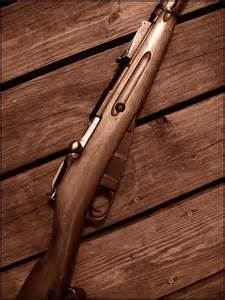
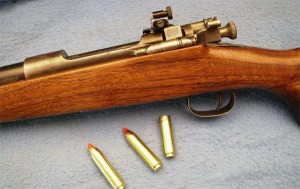

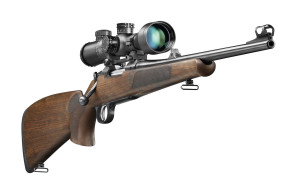
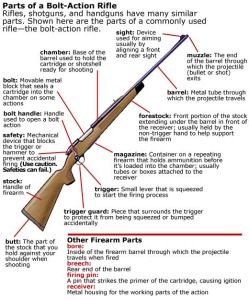
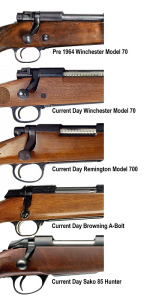

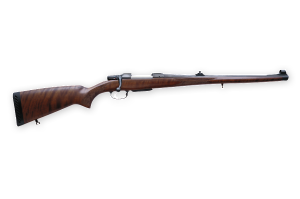

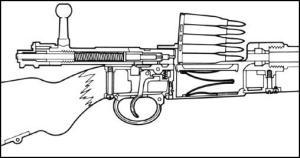

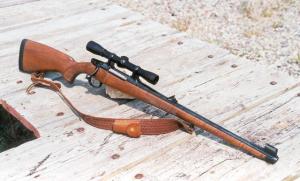
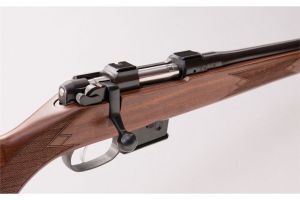
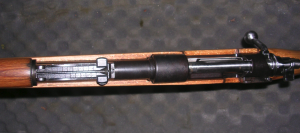
One Response to And My Favorite Long Gun is – The Bolt Action Rifle/Carbine